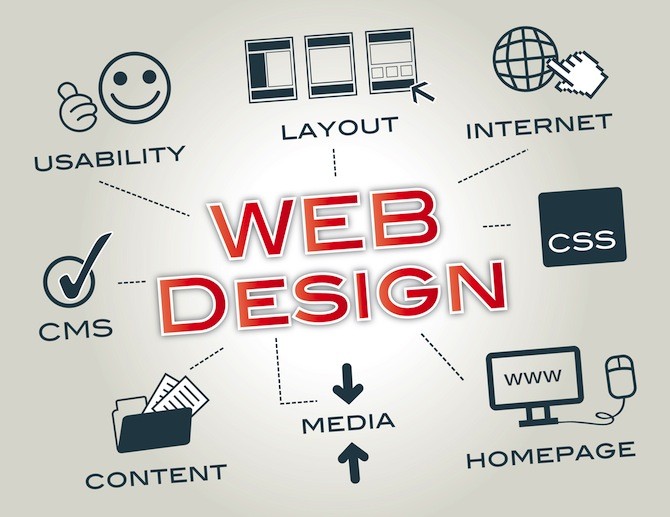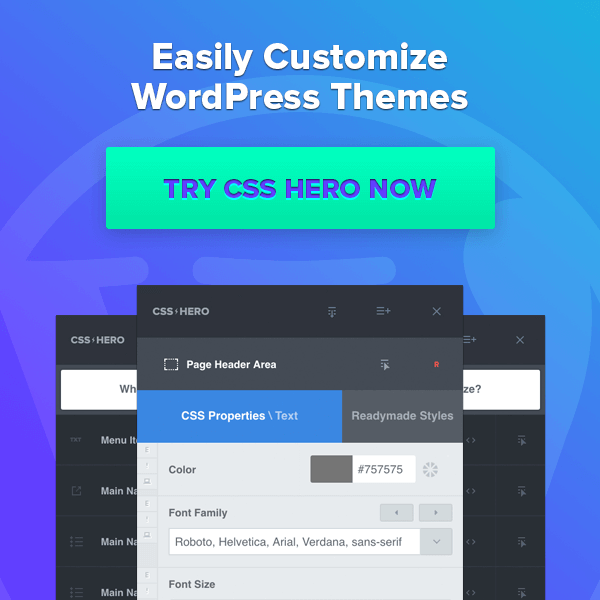The death of a blog is a sad thing to witness. Strangled by pervasive advertisements, bludgeoned by the overuse of pop-ups, and drowned in huge blocks of text, too many good blogs are found wanting.
Many bloggers believe incredible content overshadows design, but it’s actually quite opposite–bad design overshadows good content, every time.
Does this mean you must create or invest in a dazzling web design? Not necessarily. I find that the best design is often quiet usability, where your blog design anticipates the reader’s needs and quickly serves them. The main function of content is serving readers. This is also true for design elements like search boxes, about me pages, and footer navigation. Creating a clean and usable blog will do three things: highlight your content, keep readers on your site longer, and prop you up as a professional.
Let’s take a look at how to improve your blog with design elements. First, we’ll look at what to avoid:
What to Avoid
1. Too Many Fonts
I’m a fontophile, and feel about fonts how most women feel about shoes. I understand how easy it is to get carried away with fonts, but it’s important to restrain yourself. Using too many fonts in your design will cause eye fatigue. When visitors tire of adjusting to each font on your page, they’ll simply click away.
Instead, utilize two fonts on your page, maybe three, if you include a specialized logo. Find web-safe fonts that are quickly loaded on every browser. Stay away from scripts or handwriting fonts, though. Large type is preferable–stick for size 14 or even larger. No one should be squinting to read your blog.
2. Too many ads
Advertisements fuel a lot of blogs, but there must be a delicate balance in your monetization. You rely on readers clicking your ads, but you don’t want to bombard them with too many ads. In my very humble opinion, in-text advertising is unadulterated evil. An ad-heavy blog comes across as scammy.
Instead, be choosy about the ads you sell on your blog. Don’t attach ads to every element on your blog, like text or images. Rather, place ads on the sidebar, but not both sidebars. Choose one, preferably the right side.
3. Big Blocks of Text

It’s a sad fact that many readers will not hang on to your every word. Because of this, blog posts should be scannable. Break up texts into digestible bites. Forget the rules of grammar–it’s okay to have only two sentences in a paragraph. (I’m sorry, Mrs. Anderson.)
To further improve readability, incorporate bullets or numbered lists.
4. Pop-Ups!
Few things are more annoying than pop-ups. Pop-ups were almost beaten into submission a few years ago, only to make a roaring resurgence in 2013. Although everyone is doing it doesn’t mean that you should do it. Readers are immediately turned off by pop-ups.
But, how do you inform visitors of your wonderful, resourceful newsletter? There are better ways; we’ll cover this in the second half of this article.
5. Auto-Play Music

Yes. This is still a thing. Auto-Play music is akin to a person who, while hiding from a crazed murderer, accidentally coughs. That murderer will hunt down said person. I feel that way when a site I’ve just opened automatically starts playing music. There’s no greater satisfaction than closing down that tab.
6. Captcha
The use of captcha has killed more blogs than the prior 5 elements combined. Captcha does an excellent job of keeping bots away, but it has the same effect on humans. Captchas are difficult to decode (or maybe I’m the only one who must re-attempt a minimum of 5 fives). Whenever I see a captcha as a comment requirement, I just skip the comment. Avoid this happening to your blog. Comments breathe life into blogs.
What to Include
1. Responsive Design

Is your blog easily readable by mobile devices? If not, that’s your most important mission. With almost a billion smartphones in service, a sixth of the world’s population has mobile access to your blog. How will you serve them?
By implementing a responsive design that works on whatever platform used by your blog visitors, you will improve your usability and visitor retention.
2. A Tagline

Not everyone who arrives on your blog will know what it’s about. This is your opportunity to evangelize your brand. A tagline defines what your blog is about in one simple sentence. It should go underneath or close to your logo.
3. Start Here Page

When a first-time visitor arrives at your site, disillusioned and scared, don’t let them wander around aimlessly, hoping that they find what they’re looking for. A “Start Here” page guides visitors to your best blog posts, and informs them of how awesome you are.
Closely associated to the “Start Here” page is the “Top Posts” in the sidebar widget. Do both for maximum benefit. Showcasing your best, or most popular blog posts will only increase their popularity.
4. About Me Page

An “About Me” page is crucial to any design. It may be difficult to write your own bio, but it’s important to put a personal touch on what is often an impersonal experience. On your “About Me” page, share who you are, why you blog, and where you can be reached. Be sure to include your email or a contact form (even if you have a contact me page), as well as your social media links.
A lovely bonus is having a picture of yourself. It lends credibility to your site. Even better, include an introductory video of yourself. It really makes you appear trustworthy.
5. Footer Navigation

After I’ve scrolled through your posts, the last thing I want to do is scroll back up to find your menu navigation. Add navigation to your footer, as well.
You can also add a contact form to your footer, as an easy way to reach you, without forcing the visitor to take extra clicks.
6. White Space

You need a lot of white space. And white space is not necessarily “white.” It can be any color, as long as it’s devoid of words and pictures. The emptiness of white space gives respite to the eyes.
7. Call-to-Action

In Things to Avoid, we briefly discussed the evil that is pop-up advertisements. Now, we discuss what to use instead: header calls-to-action. If you are advertising your eBook or newsletter, the most unobtrusive, yet effective way to do that is by placing an opt-in header at the top of your blog. It’s infinitely better than pop-ups–I immediately click away a pop-up, without even reading it. I will linger at the top of the page to read any important updates. It’s prime real-estate.
Another great place to put a call-to-action is at the footer, to remind readers who have just finished reading your content.
8. Search Box

Search boxes are necessary, and should be prominently displayed near the top of your blog. Readers want to be able to track down information quickly and effectively. If you do not have a search box, it’s hurting your usability.
9. Amazing Images

Approximately 65% of the population are visual learners. This means your blog must include something to stimulate the optical nerves. Fortunately, great resources abound; many of them are free. Allow pictures to craft your story.
10. Use Thumbnail Links Whenever Possible

It is always possible. In conjunction with the above, use thumbnail links to related topics at the end of your blog posts. Readers are very likely to click these links, enticed by the related material and the pretty pictures.
In Summary
Good design is about what you include and also what you exclude. It takes effort to avoid the minefields that many bloggers have fallen victim to. Creating a balanced design that’s classic, but also fresh, starts by treating readers as king, content as faithful servants, and design as the castle.
What are your least favorite design elements?




